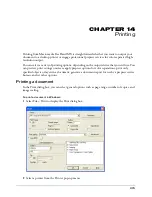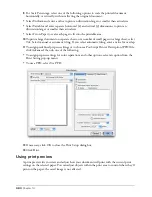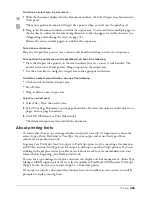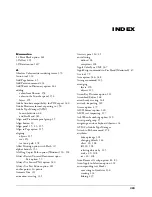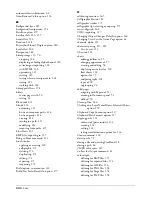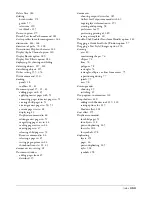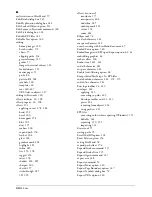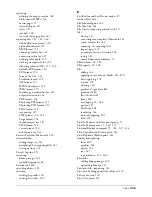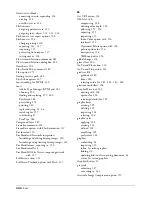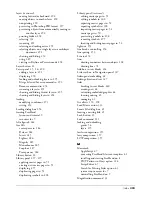
Chapter 14
384
About printing PostScript fonts
PostScript fonts are the best choice if your final output device is a PostScript printer or
imagesetter, or if you want to export your document as an EPS file. All text effects and
transformations are available for PostScript fonts.
PostScript fonts have three components:
•
The screen or bitmap font for a specific point size (Macintosh)
•
The printer or outline font
•
Font metrics—the information used to compose the font—including kerning and spacing data
In Windows, a PostScript font is available for output if the font is listed in the printer driver for
the selected target printer; if the font metrics filename appears in the target printer’s section in the
Win.ini file; or if the font was installed with a font management utility such as ATM (Windows
98 or NT 4) or with the Windows Control Panel.
On the Macintosh, a PostScript font is available for output when the screen font is properly
installed in the system. The Macintosh does not require a separate font metrics file because font
metric information is stored in the screen font. Store PostScript screen and printer fonts in the
Fonts folder within the System folder. Drag a font file to the System folder to store the file in the
appropriate location automatically. Alternatively, use a font management utility such as ATM.
For more information on installing PostScript fonts in FreeHand, see the related TechNotes
available at www.macromedia.com.
About printing TrueType fonts
TrueType fonts are best if your final output device is a desktop printer, especially a non-PostScript
printer. TrueType fonts retain quality when scaled, but text effects and transformations may not
display or print to a PostScript printer as effectively as a PostScript font with ATM.
Bitmap fonts such as PCL (Windows) are often included with non-PostScript printers. PCL fonts
generally provide a limited, nonscalable set of sizes, cannot be transformed, and do not support
special text effects.
In Windows, you install TrueType fonts using the Control Panel, and they normally reside in the
Windows folder.
On the Macintosh, TrueType fonts are located in the Fonts folder within the System folder.
Summary of Contents for FreeHand MX
Page 1: ...Using FreeHand MX Macromedia FreeHand MX...
Page 42: ...Chapter 1 42...
Page 192: ...Chapter 6 192...
Page 232: ...Chapter 7 232...
Page 288: ...Chapter 8 288...
Page 308: ...Chapter 9 308...
Page 340: ...Chapter 11 340...
Page 362: ...Chapter 12 362...
Page 374: ...Chapter 13 374...
Page 388: ...Chapter 14 388...






